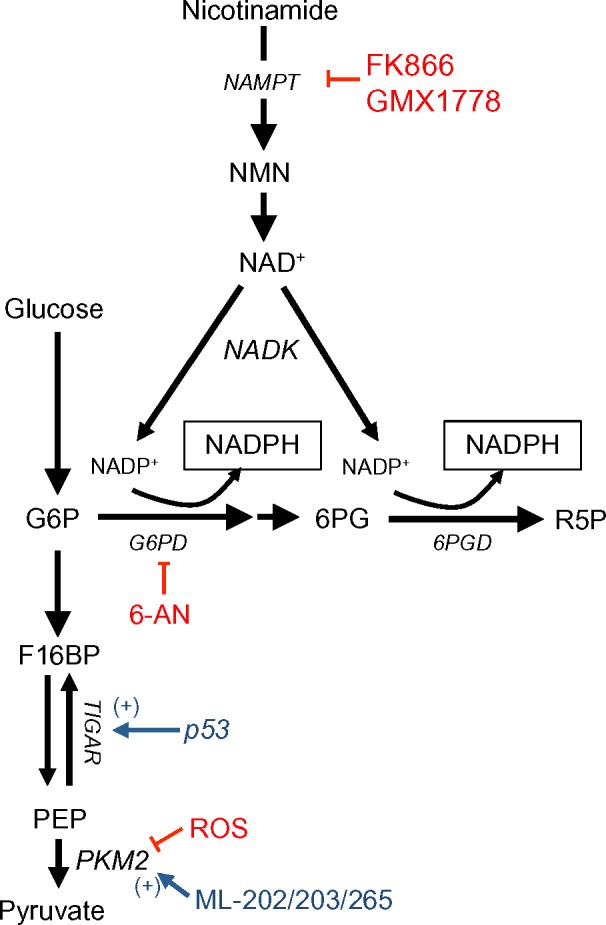Figure 1.

NADPH production from the oxidative PPP and one-carbon serine catabolism pathway.
Notes: Oxidative PPP uses glucose to generate NADPH via G6PD and 6PGD. G6PD is inhibited by then FDA-approved drug, 6-AN. NADP+ is generated through the NAD+ salvage pathway, where nicotinamide is converted to NMN via NAMPT. NADP+ is then formed by NADK. FK866 and GMX1778 inhibit NAMPT to block the production of NADP+, and therefore NADPH. During ROS stress, p53 positively regulates TIGAR to shunt glycolytic flux into the oxidative PPP. PKM2, which is overexpressed in many cancers, is inhibited by ROS, allowing glycolytic flux to be shuttled into the oxidative PPP for NADPH generation. The small-molecule compounds, ML-202/203/265, can positively modulate PKM2, thereby decreasing glycolytic flux into the oxidative PPP and blunting NADPH biogenesis during ROS.
Abbreviations: PPP, pentose phosphate pathway; NADPH, nicotinamide adenine dinucleotide phosphate; G6PD, glucose-6-phosphate dehydrogenase; 6PGD, 6-phosphogluconate dehydrogenase; 6-AN, 6-aminonicotinamide; NMN, nicotinamide mononucleotide; NAMPT, nicotinamide phosphoribosyltransferase; NADK, NAD+-kinase; ROS, reactive oxygen species; TIGAR, TP53-induced glycolysis and apoptosis regulator; PKM2, pyruvate kinase 2; G6P, glucose-6-phosphate; 6PG, 6-phosphogluconate; R5P, ribulose-5-phosphate; F16BP, fructose-1,6-bisphosphate; PEP, phosphoenolpyruvate; FDA, food and drug administration; NAD, nicotine adenine dinucleotide.
